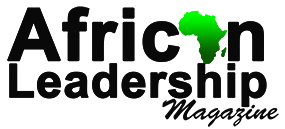Education is the foundation upon which societies are built, yet millions of students worldwide, particularly in Africa, struggle with a critical challenge: the severe shortage of qualified teachers. Across the globe, artificial intelligence (AI) is reshaping various sectors, and education is no exception. With Africa facing an education crisis due to inadequate teacher numbers, AI-powered tutors are increasingly stepping in to bridge the gap. While promising, this development raises important discussions about accessibility, effectiveness, and the long-term implications of AI in education.
According to UNESCO, sub-Saharan Africa needs at least 17 million more teachers to achieve universal primary and secondary education by 2030. In Nigeria alone, the Universal Basic Education Commission (UBEC) reports a deficit of over 194,000 teachers in primary schools. Similarly, Kenya’s Teachers Service Commission (TSC) has cited a shortage of 72,000 teachers across primary and secondary schools. Ethiopia’s Ministry of Education estimates a need for over 100,000 additional teachers to support its rapidly growing student population. This crisis is further exacerbated by poor infrastructure, inadequate funding, and low teacher salaries, which make the profession unattractive. Against this backdrop, AI-powered tutoring systems present an innovative and scalable solution to supplement traditional teaching methods.
READ ALSO: Africa and the Future of Artificial Intelligence
Globally, AI-powered tutors have demonstrated their potential to enhance learning outcomes. In China, companies like Squirrel AI have implemented adaptive learning platforms capable of tailoring content to individual student needs. The United States has also seen AI-driven platforms like Carnegie Learning and Khan Academy utilise machine learning algorithms to optimise student engagement. These models provide a framework for Africa’s education systems to adopt AI-driven solutions suited to local realities.
AI-driven educational solutions are already gaining traction in Africa. South Africa’s Siyavula is a digital learning platform that uses AI to personalise maths and science instruction, helping students grasp difficult concepts at their own pace. Rwanda has integrated AI-powered tutoring tools in select schools through partnerships with organisations like Andela, which provides coding education using intelligent software. In Ghana, Mavis Computel’s AI-powered tutors help students in rural areas access quality education without relying on a physical teacher. These solutions offer a flexible, cost-effective way to address the teacher shortage while enhancing student engagement and performance.
The transformative power of AI tutors lies in their ability to provide 24/7 personalised learning experiences. Unlike traditional classroom models constrained by rigid schedules, AI tutors use machine learning algorithms to analyse individual student performance, adapt content, and provide real-time feedback. A study by the World Bank indicates that AI-driven learning can increase student performance by up to 30%, particularly in maths and sciences. Moreover, UNESCO highlights that AI tutors can reduce the student-to-teacher ratio in overcrowded classrooms, allowing human educators to focus on more interactive and higher-order learning tasks.
However, while AI presents a revolutionary opportunity, it is not a panacea. One major challenge is the digital divide. According to the International Telecommunication Union (ITU), only 33% of Africans have access to the internet, making AI-driven education inaccessible to large portions of the population. Additionally, the cost of deploying AI solutions remains high. Governments and private stakeholders must therefore invest in digital infrastructure to ensure widespread adoption.
Another concern is teacher displacement. Critics argue that over-reliance on AI tutors could devalue human teachers, leading to job losses. However, experts such as Professor Kwame Akyeampong from the University of Sussex emphasise that AI should be viewed as a complement rather than a replacement for educators. By handling repetitive tasks, AI allows teachers to focus on critical thinking and creative instruction. AI tutors also provide significant assistance to students with special needs, offering tailored programmes for those with learning disabilities and fostering inclusivity in education.
For AI-powered tutoring to reach its full potential in Africa, policy reforms and strategic investments are necessary. Governments must collaborate with private tech companies to develop affordable and scalable AI educational tools. Public-private partnerships can enhance accessibility through subsidised AI-based learning platforms, ensuring that rural and underserved communities benefit from these technological advancements. Additionally, robust teacher training programmes should be implemented to equip educators with AI integration skills, preventing job displacement while maximising AI’s effectiveness.
Globally, AI is revolutionising education, and Africa cannot afford to be left behind. By harnessing the power of AI-driven tutors, the continent can mitigate its teacher shortage, improve learning outcomes, and lay the foundation for a more equitable education system. With the right policies, infrastructure, and investment, AI-powered tutors can serve as the bridge between Africa’s present educational crisis and a future where every child has access to quality education, irrespective of geographical and economic barriers.




